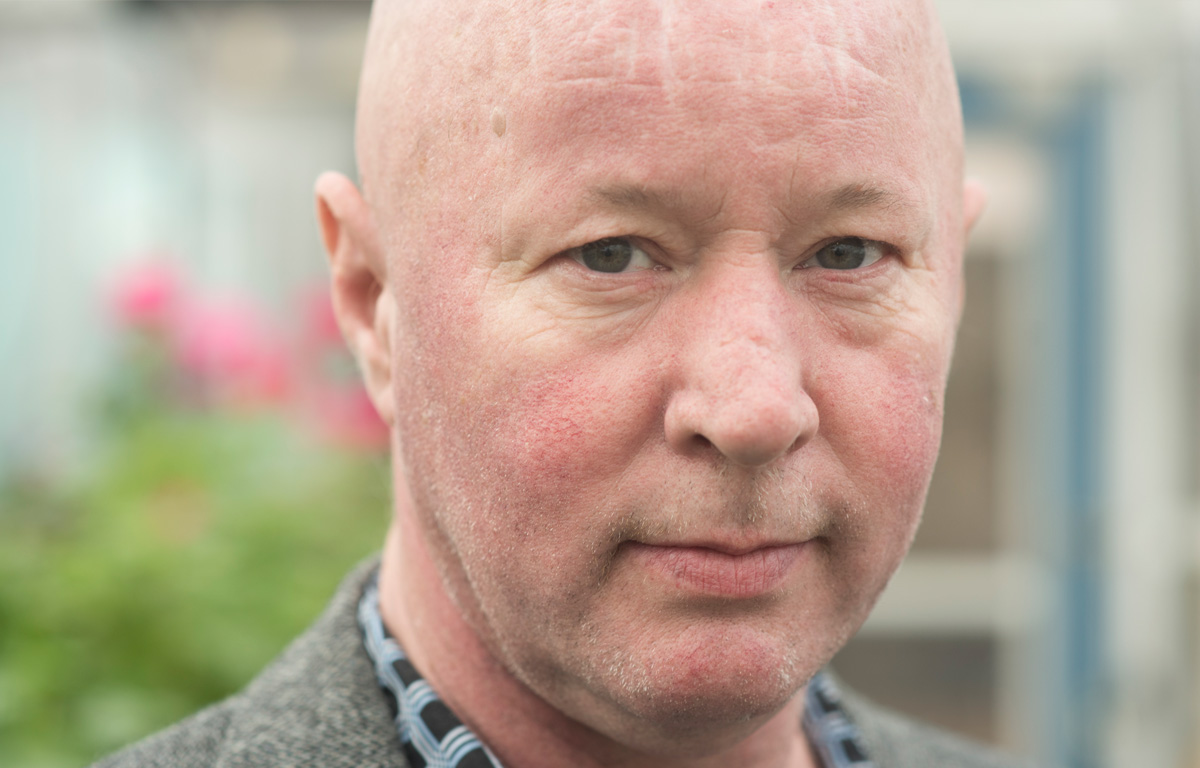Jeffrey Tekano:
“You have nothing to occupy your mind.”
For an inmate like Jeffrey Tekano, being placed in solitary confinement for 23 hours a day is akin to mental torture. Just the thought that he might be placed alone in a cell with only a mattress and a fluorescent light is enough to bring on a panic attack. Tekano, 57, suffers from post-traumatic stress disorder and attention deficit hyperactivity disorder. Being deprived of human contact makes him so anxious, he bangs his head on the wall until he bleeds from his ears or passes out. Once he suffered a “12-day concussion.”
“It is very distressing for me because I feel even more isolated. You have nothing to occupy your mind,” says Tekano.
It may come as a surprise to some that the practice of solitary confinement, also known as administrative segregation, is still used in Canada’s prison system.
But it is.
Tekano was having a panic attack, guards in riot gear would forcibly remove him from his cell, douse him with pepper spray, shackle him, and transfer him to solitary confinement.
Jeffrey Tekano was placed in solitary confinement by Correctional Service Canada on dozens of occasions from 2004 until 2009 at Kent Institution in B.C., where Tekano was serving a 21-year sentence for bank robbery. Sometimes, the practice was used to keep him safe from other prisoners who were frustrated by his head-banging. On other occasions when Tekano was having a panic attack, guards in riot gear would forcibly remove him from his cell, douse him with pepper spray, shackle him, and transfer him to solitary confinement.
With the help of Prisoners’ Legal Services of B.C., Tekano finally filed a human rights complaint with the Canadian Human Rights Commission. His complaint was referred to the Canadian Human Rights Tribunal in 2010 and was eventually resolved.
After he filed the complaint, Tekano was sent to a regional treatment centre where he was able to receive medication, therapy and treatment for his mental health issues. He learned how to cope with his anxiety. “I had counseling with a psychologist and with a nurse and a doctor and my frequency of self-harm decreased,” he said in a telephone interview from Chilliwack Community Correctional Centre, where he is now out on parole.
Jeffrey Tekano’s story highlights the long-term damage that solitary confinement can do, especially to youth, and to those who suffer from mental disorders.
Sometimes the consequences are tragic.
“Isolated prisoners have difficulty separating reality from their own thoughts, which may lead to confused thought processes, perceptual distortions, paranoia and psychosis.”
Edward Snowshoe committed suicide in 2010 after spending 162 days in segregation. Ashley Smith, a teenager, strangled herself with a ligature in 2007, after more than 1,000 days in solitary confinement. A coroner’s inquest recommended a prohibition on placing inmates in long-term segregation (longer than 15 consecutive days), and a limit of 60 days in a calendar year. It also recommended a ban on segregating inmates with histories of self-harm or mental health issues.
In the meantime, prisoners’ rights groups are fighting for change through the courts. In Ontario, a law firm has commenced a class-action against the Attorney General of Canada, alleging an over-reliance on solitary confinement and a failure to provide adequate care for mentally ill inmates. The B.C. Civil Liberties Association and the John Howard Society of Canada have also filed a lawsuit challenging the use of solitary confinement as unconstitutional.
The Canadian Medical Association Journal has called solitary confinement “cruel and unusual” punishment. “Isolated prisoners have difficulty separating reality from their own thoughts, which may lead to confused thought processes, perceptual distortions, paranoia and psychosis,” wrote Dr. Diane Kelsall, a deputy editor. “In addition to the worsening of pre-existing medical conditions, offenders may experience physical effects, such as lethargy, insomnia, palpitations and anorexia.” The editorial said the lack of stimulation and social interaction can lead to anxiety, depression and anger, and increase the risk of self-harm and suicide. Inmates should be placed in isolation only in “exceptional circumstances” for their own safety or for the safety of others and for the shortest possible time, it recommended.
In the case of Tekano, a doctor he saw while in prison described segregation as a form of mental torture for people who suffer from attention deficit hyperactivity disorder. The prolonged sensory deprivation and lack of stimulation in seclusion may actually worsen the condition. Psychiatric treatment is a better way to help stop self-harming behaviours, the doctor said.
Tekano says he has largely recovered from the damage of segregation, although he is still in a program for post-traumatic stress disorder and suffers from flashbacks. He is grateful for the support he has received from the staff at the centre in Chilliwack and is looking forward to living independently and getting a job. “I’m doing much better. I have learned to control my head-banging. But I have flashbacks and nightmares,” he said.
The Canadian Human Rights Commission will continue to speak out against the use of solitary confinement (administrative segregation). The Commission maintains that the practice should only be used in exceptional circumstances, as a last resort, for a very brief time, and never with inmates with serious mental health issues.

